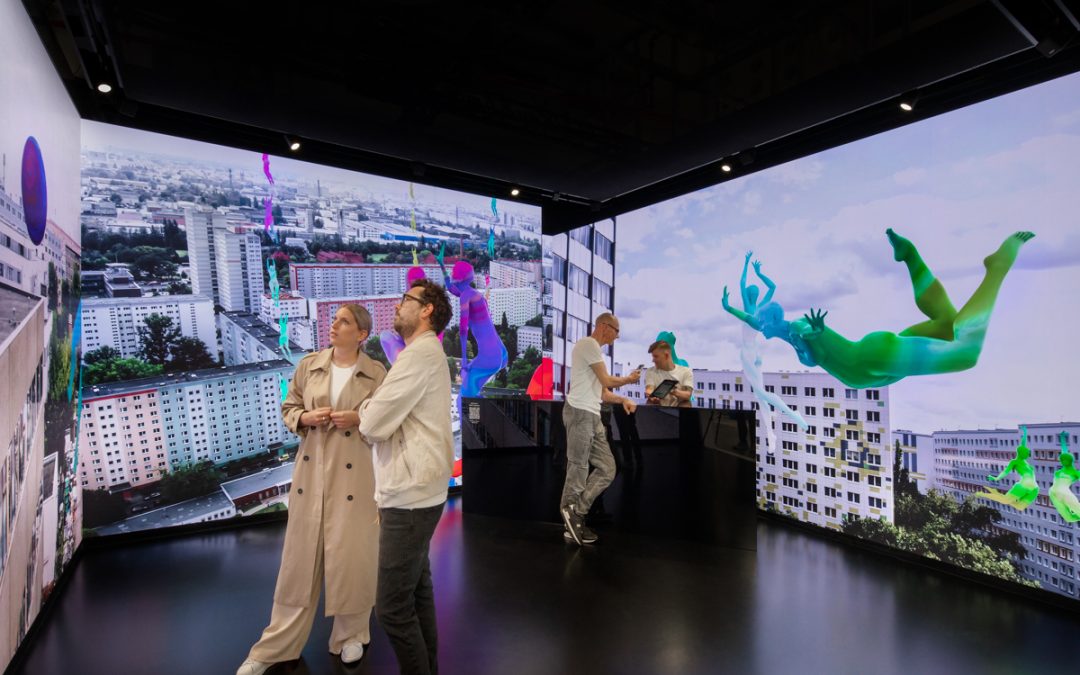In the current highly competitive business landscape, having a finger on the pulse is essential for any company to capture the attention of their target audience. As consumer preferences continue to evolve according to trends in the industry, so do the strategies used in marketing and building brand awareness.
One of the most exciting trends in modern day marketing is the integration of immersive technologies into strategy. In this article, we explore how these immersive technologies can be integrated seamlessly into your marketing strategy, to create unforgettable and engaging experiences for your customers.
The need for Immersive Marketing Strategies
The dawn of digitalization brings about a new era of consumer expectations and standards. Customers look beyond a product or service; seeking engaging and memorable experiences. Immersive marketing meets this demand by creating unique, tailored, and interactive experiences that resonate with consumers and their mindsets.
Integrating Immersive Technologies into your Marketing Strategy
1. Virtual Showrooms and Product Demos
Product demonstrations and testing are one facet which can always be infused with a little more creativity and appeal. Creating virtual showrooms where customers explore your products or services in a 3D environment is particularly beneficial for industries where the purchase process can be solidified for higher customer satisfaction.
For example, IKEA’s VR Planner app allows potential customers to design and explore their dream kitchen virtually. This immersive experience further boosted increased customer confidence in their purchases and reduced returns.
2. Gamification of Marketing
Developing interactive games and experiences that feature your products or brand allows your customers to perceive your outreach in different forms. Gamification encourages customer engagement and competition, further driving user participation, positive brand perception, and building long-term loyalty.
3. Interactive Storytelling
Immersing your audience in a narrative and allowing them to interact with various characters and environments can be a powerful tool for brand storytelling. While most interactive experiences are designed for one purpose, and one story to be relayed to all visitors; customizing the characters and environments according to your audience and their demographic can further reel them in, solidifying the foundations of a long-lasting impression and positive brand reception.
Benefits of Integrated Immersive Marketing Strategies
1. Enhanced Customer Engagement
Immersive technologies create strong emotional connections with customers, making your outreach more memorable and impressionable. Customers are more likely to engage with content that offers a unique and immersive experience as compared to content that simply outlines benefits and solutions without personalization.
2. Improved Product Visualization
Integrating immersive technologies into your marketing strategy enables customers to visualize products in their own environment, supporting their purchase decisions. For example, AR can be used for trying out interior fit out in your living room, before making an investment.
3. Supports Data Analytics and Insights
Immersive technologies can collect valuable data on customer behavior and preferences, allowing for more targeted and effective marketing campaigns to be planned for long-term branding and awareness. When used ethically, these data and insights can be a very effective tool to remarket and target content towards cold leads. Content type, target markets, and messaging are further enhanced by the results of this data, building a clear pipeline for converting customer interactions into solid buyers.
4. Competitive Advantage
By adopting immersive marketing strategies, you can differentiate your brand from competitors and establish yourself as an innovative industry leader. A fresh take on your marketing and branding strategy can put you further ahead on the curve as compared to other companies in the industry and allow you access to several untapped consumer demographics first.
Conclusion
Incorporating immersive technologies into your marketing strategy is a visionary move. With the rising demand for unique, sentimental experiences, to the benefits including scaled engagement and advanced product visualization, the potential is undeniable. In a constantly evolving marketing landscape, these integrated strategies offer a way to connect deeper with your audience, leaving a mark and reserving a place for you at the forefront of innovation in the digital age. The future of marketing is immersive; and to stay ahead of the curve, we have to embrace it.
FAQs about integrating Immersive Technology into Marketing Strategies
Q: Can immersive technologies be utilized for B2B marketing?
A: Yes, immersive technologies can enhance B2B marketing. For instance, VR can be used for product demonstrations, while AR can assist in remote maintenance and training for industrial equipment.
Q: How can the success of immersive marketing strategies be measured for effectiveness?
A: Key performance indicators (KPIs) for immersive marketing can include engagement metrics, conversion rates, customer feedback, and the collection of user data for future personalization campaigns.
Q: What are some affordable ways to get started with immersive marketing?
A: Consider leveraging existing social media platforms such as Facebook, Instagram, or Snapchat to create AR filters or lenses or explore partnerships with established AR/VR companies to reduce development costs.
Location: O2 Studio.
Photography: Ken Schluchtmann.

